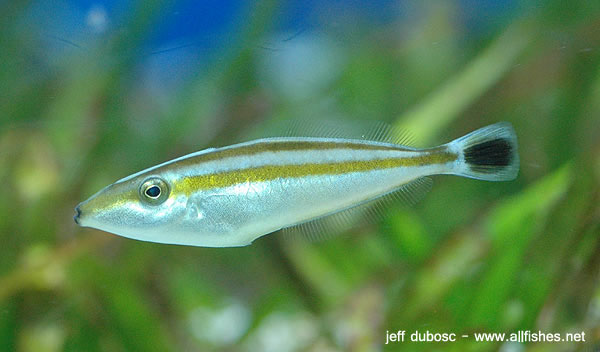| Monacanthidae (Filefishes) |
| 19 cm TL (male/unsexed) |
|
reef-associated; marine; depth range 1 - 55 m |
| Indo-West Pacific: tropical and subtropical waters, South Africa eastward through Indonesia; northward to southern Japan; southward to the east coast of Australia (Ref. 33352). Southeast Atlantic: south coast of South Africa. |
|
Dorsal spines (total): 2-2; Dorsal soft rays (total): 43-50; Anal spines: 0-0; Anal soft rays: 41-46. Pale brown to grey in color; two brown stripes on body; adults with yellow spots on head and body; soft dorsal and anal fins yellowish; caudal fin dark brown (Ref. 4421).
Description: Characterized further by having shorter snout than first dorsal spine, origin of spine anterior to level of eye; relatively slender body, depth at level of origin of anal fin about 6.0 in SL in juvenile and about 3.5 in adult male; very low second dorsal and anal fins; convex snout profile, especially in male; absence of pelvic rudiment or ventral flap; short and rounded caudal fin (Ref. 90102). |
| Inhabit coastal reefs and enter estuaries. Often in silty habitat and usually on slopes with low rubble reef and rich invertebrate growth, ranging to moderate depths (Ref. 48637). Found on weedy and sandy areas of lagoon and seaward reefs (Ref. 9710). Often found in pairs (Ref. 9710). Sometimes solitary or in groups (Ref. 90102). Juveniles hide or shelter near seawhips or seapens (Ref. 48637). |
|
Least Concern (LC); Date assessed: 03 March 2015 Ref. (130435)
|
| harmless |
Source and more info: www.fishbase.org. For personal, classroom, and other internal use only. Not for publication.
